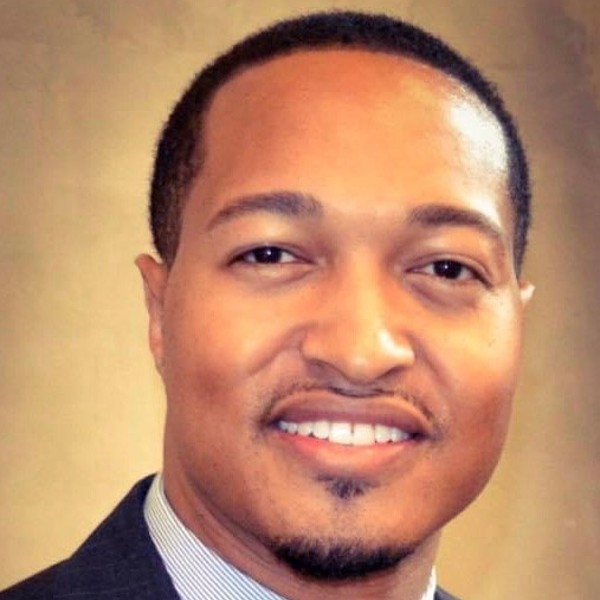In 1997 the British group Chumbawamba released the song “Tubthumping,” which went on to become an international hit. I first heard it in 2003 blaring out of a store window on Main Street in Heidelberg, Germany, where I was stunned by the number of people who were singing along.
True, English-language music is wildly popular among German adolescents, but the people I observed ranged far beyond the teenage years. Whether they could understand enough English to follow the lyrics didn’t matter.
What was proclaimed loud and clear was only one simple phrase that everyone seemed to know, the refrain that keeps people all over the world coming back for more: “I get knocked down, but I get up again; you’re never going to keep me down!”
Upon reflection, I should not have been surprised at all.
Getting knocked down is as basic as being human -- life just does this to us -- and so is the desire to get back up. The legend of the phoenix, for example, is a story about resilience: when the phoenix dies, it is reborn out of its own ashes. All human beings are knocked down, and all long to get back up.
It is therefore somewhat surprising to realize that the refrain’s last line -- “you’re never going to keep me down!” -- speaks more of a difference between people than it does of a commonality.
Indeed, the difference between those who repeatedly get back up and those who don’t is exactly the difference between those who are able to lead and those who aren’t. The name for this difference is resilience, the ability to get back up again and again and again and again. It is not unique to leaders, of course, but it is essential for long-term leadership.
Resilience isn’t, however, the typical quality we ascribe to leaders. We think instead of charisma, intellectual prowess, rhetorical skill, political savvy, financial success or something along these lines.
But in his recent book on spotting exceptional talent, “The Rare Find: Spotting Exceptional Talent Before Everyone Else,” George Anders notes that one of the best predictors of effectiveness as a leader is resilience.
The problem, Anders observes, is that standard selection processes from a variety of organizations -- résumé reading, interviews and the like -- tend not to ask the kinds of questions that can provide insight into a candidate’s resilience. The reason is not so much because we find it hard to assess resilience but more because we didn’t know that we needed to look for it.
Admittedly, resilience is not the first word that comes to mind to describe Christ-shaped leadership.
True, Jesus did get up even from the dead. But this was not resilience; it was bodily resurrection, an act of God strictly and entirely beyond what was possible for a dead man to do for himself.
On the other hand, however, the Christians in the Acts of the Apostles, Paul’s letters and many other New Testament books display remarkable resilience in the face of overwhelming challenges.
In addition to the regular, common poverty and sickness in the ancient world, the Christians faced serious division within and lethal persecution from without, major miscalculations in strategy, authority crises, apostasy and so on.
Taken individually, any one of these features would be enough to knock one down; taken together, they show a community under repeated duress. Under such circumstances it would be all too easy for the leaders to fold, or to return to normal Jewish or pagan life.
Here, instead, is how one of them typically responded: “We are hard pressed on every side, but not crushed; perplexed, but not in despair; persecuted, but not abandoned; struck down, but not destroyed. We always carry around in our body the death of Jesus, so that the life of Jesus may also be revealed in our body. For we who are alive are always being given over to death for Jesus’ sake, so that his life may also be revealed in our mortal body. So then, death is at work in us, but life is at work in you” (2 Corinthians 4:8-12 NIV). In short, we are resilient for your sake.
Such resilience, however, is not an inner strength or self-confidence. Resilience in the Christian sense is a kind of lived hope, a way to keep getting up again that has its roots in God’s permanent faithfulness.
When we get knocked down even to the point of death, Paul continues, we can currently keep getting back up to continue our work “because we know that the one who raised the Lord Jesus from the dead will also raise us with Jesus and present us with you to himself” (v. 14). Resilience, therefore, is not synonymous with toughness. It is, rather, a response of hope.
This is important to understand, because it names more specifically what we’re looking for when we seek leaders who are resilient: resilient leaders are those who know the lived shape of hope. Ultimately, they figure forth the hope we have in the face of a life that repeatedly knocks us down. And in that hope, they show us what we have to cling to and thus to follow.
This is the deeper point about resilience that “The Rare Find” misses. Efficacy, fortitude, persistence and the like are all important, but they are not finally or most deeply why we follow resilient leaders.
Whether or not such leaders are Christian, we follow them because we see in them the hope for which we yearn -- or, at the very least, its shadow. Kill hope, and resilience will die with it. And where resilience is displayed, there you see hope.
But can resilience be cultivated? In many ways, it is far easier to see how resilience cannot be cultivated than to see how it can. Telling clinically depressed people, for example, to buck up or admonishing the sick or poor just to try harder produces nothing in the way of resilience or hope; in fact, it is cruel.
Still, there are at least three central ways that we can cultivate resilience. These ways of cultivating resilience emerge from the recognition of our present location within the broader Christian narrative that moves from God’s good creation through the fall to the election of Israel, the redemption wrought in Jesus Christ and the consummation of this redemption at the end.
We exist in the period after Jesus and before the consummation. In this period, God’s kingdom is simultaneously now and not yet here. Now/not yet, that is, not only names our moment in the story; it is also shorthand for Christian knowledge of the truth about the world as we know it.
The first way to cultivate resilience within this moment of the Christian story is to recalibrate our imaginations to the reality of profound difficulty as a natural part of life.
At least in the U.S., there is a pervasive sense that we are entitled to ease or at least to good things that should themselves be easy to get. The world, it is imagined, somehow owes us a good life.
The trouble, however, is that the world won’t cooperate with this view and instead keeps sending us things that repeatedly knock us down. In the face of reality, we should learn to expect struggle and even gross failure as inexpungible patterns of human life in the world as we know it.
This is the “not yet” of Christian knowledge of the world. Perhaps surprisingly, however, changing our expectations of what the world must offer us has the potential to disclose many ways in which we already exhibit resilience in daily life -- the ability to go each day to a job we’d rather not do, to face hard relationships with the hope of something better, to sacrifice our needs for someone else’s sake and so on.
Accepting the difficulty of the world allows us to note the daily forms of resilience; attending to these begins the skill of learning how to hear words of hope in the context of daily life.
The expectation of ease also has a somewhat paradoxical effect, in that it can lead people to despair. When life brings nothing but struggle, then the utter lack of ease results in a kind of hopelessness -- the seemingly permanent state of being knocked down.
So, second, we need to establish sites of hopefulness in the midst of despair. Here in Durham, N.C., the work of TROSA with substance abusers, for example, is work that teaches hope by means of focused practices of repair. In Houston, it’s Pleasant Hill Baptist Church. And all across the nation on every single day of the week, it’s Alcoholics Anonymous. This is the “now” of Christian knowledge of the world. By learning how to hope, people in despair learn how to get back up again and develop resilience step by step.
Third, as these examples indicate, resilience is best learned in community.
We often think of resilience in individual terms: this or that person is resilient. But communities of hope -- the calling of all Christian communities -- are actually places that have resilience written into their being. They are founded on hope, and their very existence testifies to the fact that getting back up is not simply a matter of the individual will. We can be helped back up, and can learn how to help others up.
Hope too, therefore, is not only our own response to the world but is something we can extend to others and they can extend to us. Christian communities often fall far short of being places of hope, but that is their foundation and their calling.
Because of God’s work in Christ, we can, quite literally, hope for someone else, and they can hope for us.
Start talking with resilient leaders and soon enough you will see that someone hoped for them in a time when they couldn’t get back up. Resilience, in this understanding, is a communal practice, the fruit of a common life rooted in hope itself.
Resilient leaders are those who are best able to figure forth the hope of the community -- not least in the face of failure, again and again and again.

















